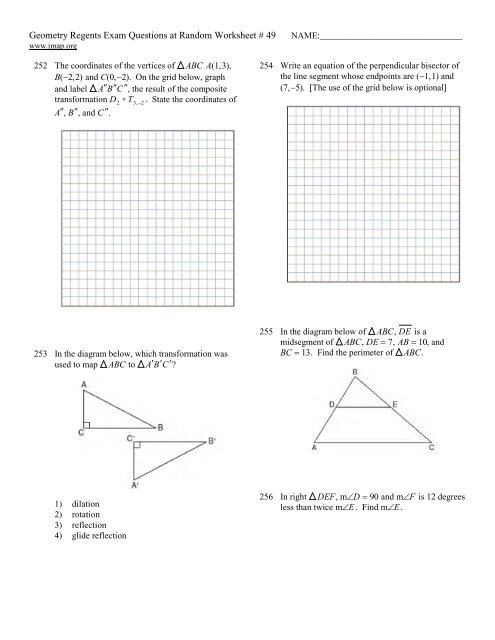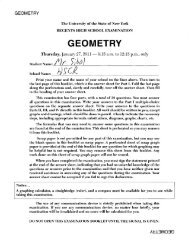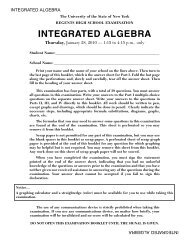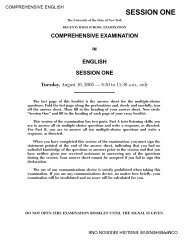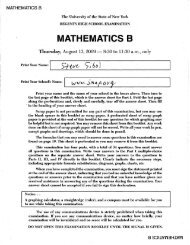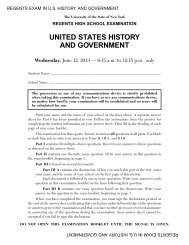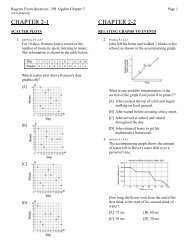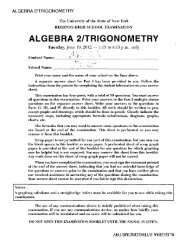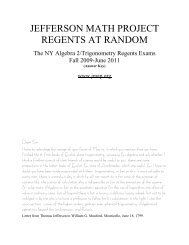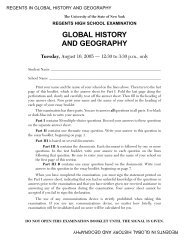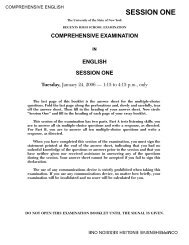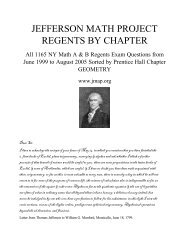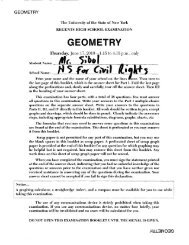Geometry Regents at Random Worksheets - JMap
Geometry Regents at Random Worksheets - JMap
Geometry Regents at Random Worksheets - JMap
Create successful ePaper yourself
Turn your PDF publications into a flip-book with our unique Google optimized e-Paper software.
<strong>Geometry</strong> <strong>Regents</strong> Exam Questions <strong>at</strong> <strong>Random</strong> Worksheet # 49 NAME:________________________________<br />
www.jmap.org<br />
252 The coordin<strong>at</strong>es of the vertices of ABC A(1,3),<br />
B(−2,2) and C(0,−2). On the grid below, graph<br />
and label A″B″C ″, the result of the composite<br />
transform<strong>at</strong>ion D 2 T 3,−2 . St<strong>at</strong>e the coordin<strong>at</strong>es of<br />
A″, B″, and C ″.<br />
253 In the diagram below, which transform<strong>at</strong>ion was<br />
used to map ABC to A′B′C ′?<br />
1) dil<strong>at</strong>ion<br />
2) rot<strong>at</strong>ion<br />
3) reflection<br />
4) glide reflection<br />
254 Write an equ<strong>at</strong>ion of the perpendicular bisector of<br />
the line segment whose endpoints are (−1,1) and<br />
(7,−5). [The use of the grid below is optional]<br />
255 In the diagram below of ABC, DE is a<br />
midsegment of ABC, DE = 7, AB = 10, and<br />
BC = 13. Find the perimeter of ABC.<br />
256 In right DEF, m∠D = 90 and m∠F is 12 degrees<br />
less than twice m∠E . Find m∠E .


